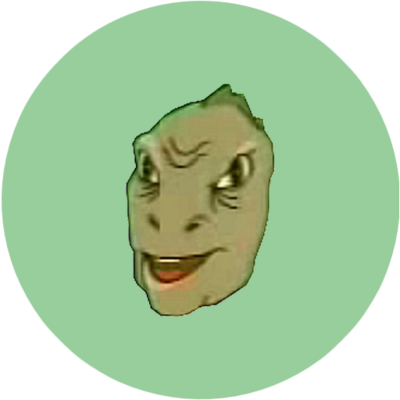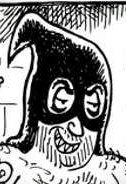Maroons are descendants of Africans in the Americas who formed settlements away from slavery. They often mixed with indigenous peoples, eventually evolving into separate creole cultures such as the Garifuna and the Mascogos.
In the New World, as early as 1512, enslaved Africans escaped from Spanish captors and either joined indigenous peoples or eked out a living on their own. Sir Francis Drake enlisted several cimarrones during his raids on the Spanish. As early as 1655, escaped Africans had formed their communities in inland Jamaica, and by the 18th century, Nanny Town and other villages began to fight for independent recognition.
When runaway enslaved people and Amerindians banded together and subsisted independently they were called maroons. On the Caribbean islands, they formed bands and on some islands, armed camps. Maroon communities faced great odds against their surviving attacks by hostile colonists, obtaining food for subsistence living, as well as reproducing and increasing their numbers. As the planters took over more land for crops, the maroons began to lose ground on the small islands. Only on some of the larger islands were organized maroon communities able to thrive by growing crops and hunting. Here they grew in number as more enslaved people escaped from plantations and joined their bands. Seeking to separate themselves from colonizers, the maroons gained in power and amid increasing hostilities, they raided and pillaged plantations and harassed planters until the planters began to fear a massive revolt of the enslaved black people.
The early maroon communities were usually displaced. By 1700, maroons had disappeared from the smaller islands. Survival was always difficult, as the maroons had to fight off attackers as well as grow food. One of the most influential maroons was François Mackandal, a houngan or voodoo priest, who led a six-year rebellion against the white plantation owners in Haiti that preceded the Haitian Revolution.
In Cuba, there were maroon communities in the mountains, where African refugees had escaped the brutality of slavery and joined refugee Taínos. Before roads were built into the mountains of Puerto Rico, heavy brush kept many escaped maroons hidden in the southwestern hills where many also intermarried with the natives. Escaped slaves sought refuge away from the coastal plantations of Ponce. Remnants of these communities remain to this day for example in Viñales, Cuba, and Adjuntas, Puerto Rico.
Maroon communities emerged in many places in the Caribbean (St Vincent and Dominica, for example), but none were seen as such a great threat to the British as the Jamaican Maroons. The British governor of the Colony of Jamaica, Edward Trelawny signed treaties in 1739 and 1740 promising them 2,500 acres in two locations, at Cudjoe's Town (Trelawny Town) in western Jamaica and Crawford's Town in eastern Jamaica, to bring an end to the warfare between the communities. In exchange, they were to agree to capture other escaped slaves. They were initially paid a bounty of two dollars for each African returned.
Beginning in the late 17th century, Jamaican Maroons fought British colonists to a draw and eventually signed treaties in the mid-18th century, that effectively freed them a century before the Slavery Abolition Act 1833, which came into effect in 1838. To this day, the Jamaican Maroons are to a significant extent autonomous and separate from Jamaican society. The physical isolation used to their advantage by their ancestors has today led to their communities remaining among the most inaccessible on the island. In their largest town, Accompong, in the parish of St Elizabeth, the Leeward Maroons still possess a vibrant community of about 600. Tours of the village are offered to foreigners and a large festival is put on every January 6 to commemorate the signing of the peace treaty with the British after the First Maroon War.
In the plantation colony of Suriname, which England ceded to the Netherlands in the Treaty of Breda (1667), escaped slaves revolted and started to build their villages from the end of the 17th century. As most of the plantations existed in the eastern part of the country, near the Commewijne River and Marowijne River, the Marronage (i.e., running away) took place along the river borders and sometimes across the borders of French Guiana. By 1740, the maroons had formed clans and felt strong enough to challenge the Dutch colonists, forcing them to sign peace treaties. On October 10, 1760, the Ndyuka signed such a treaty, drafted by Adyáko Benti Basiton of Boston, a former enslaved African from Jamaica who had learned to read and write and knew about the Jamaican treaty. The treaty is still important, as it defines the territorial rights of the Maroons in the gold-rich inlands of Suriname.
Enslaved people escaped frequently within the first generation of their arrival from Africa and often preserved their African languages and much of their culture and religion. African traditions included such things as the use of certain medicinal herbs together with special drums and dances when the herbs are administered to a sick person. Other African healing traditions and rites have survived through the centuries.
The jungles around the Caribbean Sea offered food, shelter, and isolation for the escaped enslaved people. Maroons sustained themselves by growing vegetables and hunting. Their survival depended upon their cultures, and their military abilities, using guerrilla tactics and heavily fortified dwellings involving traps and diversions. Some defined leaving the community as desertion and therefore punishable by death. They also originally raided plantations. During these attacks, the maroons would burn crops, steal livestock and tools, kill slavemasters, and invite other enslaved people to join their communities. Individual groups of maroons often allied themselves with the local indigenous tribes and occasionally assimilated into these populations. Maroons played an important role in the histories of Brazil, Suriname, Puerto Rico, Haiti, Dominican Republic, Cuba, and Jamaica.
Resources for Organizing your workplace/community :sabo:
Resources for Palestine :palestine-heart:
Buy coffee and learn more about the Zapatistas in Chiapas here :EZLN:
Here are some resourses on Prison Abolition :brick-police:
Foundations of Leninism :USSR:
:lenin-shining: :unity: :kropotkin-shining:
Anarchism and Other Essays :ancom:
Remember, sort by new you :LIB:
Follow the Hexbear twitter account :comrade-birdie:
THEORY; it’s good for what ails you (all kinds of tendencies inside!) :RIchard-D-Wolff:
Come listen to music with your fellow Hexbears in Cy.tube :og-hex-bear:
Queer stuff? Come talk in the queer megathread! ! :sicko-queer:
Monthly Neurodiverse Megathread and Monthly ND Venting Thread :Care-Comrade:
@aaaaaaadjsf @Abraxiel @Antilope @Alaskaball @Arahnya @bbnh69420 @budoguytenkaichi @buh @Bunhead @CARCOSA @CDommunist @Cherufe @ClathrateG @ClimateChangeAnxiety @clover @comi @communistfuckface @ComradeCmdrPiggy @ComradeEchidna @context @CopsDyingIsGood @crime @DasKarlBarx @DeathToBritain @Dirt_Owl @Downanotherday @Eco @ella @el_principito @EmmaGoldman @FidelCashflow @FunkyStuff @GalaxyBrain @Goadstool @GoroAkechi @Grownbravy @inshallah2 @JamesConeZone @Kanna @Kaputnik @Koa_lala @LeninWeave @Lil_Revolitionary @LoudMuffin @Lundi @marxisthayaca @MaybeNickCage @MelaniaTrump @Melon @Mindfury @Ness @PM_ME_YOUR_FOUCAULTS @PorkrollPosadist @PurrLure @Quimby @Ram_The_Manparts @Redcuban1959 @REallyN @Rem @RoseColoredVoid @Sandinband @SorosFootSoldier @Stalinsfingers @TheGhostOfTomJoad @Trouble @ultraviolet @viva_la_juche @WIIHAPPYFEW @Wmill @wtypstanaccount04 @Yanqui_UXO @Zoift
I made the list!! I'm listworthy!
Wait, shit. I gotta go touch grass asap.
It’s just a list of the biggest nerds on the site and me.
:fidel-balling:
:agony-shivering:
I'm always in the mega because I get bored at work with no one to talk to lmao
I'm posting from the work bathroom right now as a matter of fact
:07:
It genuinely pains me that I can't message you fine folks irl. sadness. but opsec is sincerely important.
you could probably message or communicate with some folks over discord. I mean, there's the old chapo server, so there's already overlap enough we'd go down if there was an attempt to take us out. I don't think we have much to fear from the feds(well, much more than we already do for being leftists) unless we get a lot cooler or they get a lot worse real fast.
yeah, not feds so much as just general online safety. I've learned (and re-learned) the importance of anonymity online.
yeah that's fair. I think I might make a new account with basically the same name soon so I can avoid doxxing myself.
Whose dick and/or clit do I gotta suck to get added to this list?
just applied for a job at a 100% worker-owned warehouse, fingers crossed
crazy how Russia is gonna invade Ukraine any day now, for reals guys, it's gonna happen, Joe Biden said he triple promises. what's great is the great defender of nations, who has never invaded anywhere on the most flimsy fucking pretences, the United States, is here to defend the people of Ukraine!!!
Canadian skater makes an illegal move that blindsides other competitors, everyone has to basically stagger mid-turn, results in the Chinese skater hitting a cone and sending it sliding forward, and then tripping the other Canadian skater. Skater who makes the illegal move gets DQd, skater who gets tripped gets to move on.
Redditor posts a super slow motion gif of just the part where the Chinese skater touches the cone, comments are full of "The Chinese have a culture of cheating and backstabbing" and other such racism. This is gonna happen the entire Olympics lmao.
Update: they're here! The workers are working on the power lines!
I may hate the electric company and the government but praise be to the workers for they are all that is good in this cold dark world.
Never been this hyped to take a real shower or be able to flush the toilet after taking a shit in my life.
Just makes me more certain that housing is a human right.
:praise-it:
Mentioned the Rogan shit to my gf and she has no idea who he is :lenin-heart:
Today marks a very special day in my personal history.
It’s the first day Ive eaten PB&Js for all three meals.
It’s a special day for me too, I finally made the nerd list. You could say I’ve made it. You could say that.
Valentine's Gay is coming up :party-blob: Gotta remember to make reservations for me and my gf at a fancy restraunt
This is like week 3 of making myself a nice breakfast on Monday to start the week. This is a pretty good accidental self care thing I've fallen into :thinky-felix:
fuck it, I’m saying it, unless there’s a shift in game freak’s design philosophy regarding mainline (not fully, of course, but some aspects) following the surprisingly receptive response to legends arceus, Unova will be the peak of Pokémon. I’d say fight me but my opinion probably won’t change.
The stylized 2.5D is probably the best Pokémon has looked (relative to hardware capabilities), the animations are actually animated, the story is too competent to be in a Pokémon game, the music almost hit the sweet spot between low-fidelity and ‘I cannot hear half the instruments in this song’-production. It was probably peak polish for mainline.
I can’t fucking wait for them to fuck the remakes up, let’s fucking go. Give me that fucking dead-eyed no-nose smile on my man N.
Ghetsis is Khrushchev btw
I... I liked Sun and Moon :sadness: My boy Rowlet.. Kukui... KUKUI!
The ultra versions can burn tho they sucked.
sun and moon is fine because there's clear effort that went into the story, much moreso than xy and sword shield. it's definitely the best 3d release (though fuck the removal of megas and what it lead to lmfao)
it's no unova though. sun and moon is like, average-jrpg levels of wall of text, unova tiptoes the line between the pokemon-style of "your own story" and narrative.
of course, I'm biased, because i watched a couple youtube playthroughs since no 3ds, but still
Wasn't there a shift to Z-Moves? did they add megas or like just previous megas. it came out in 2016 so uh, i was 13, might not remember
They added Z moves as a new thing, then gave you access to all the megas from the previous games after you completed the main story. No new megas, but at least they let you keep the ones from previous games, unlike SwSh
at least there's that, lol. why couldn't they have just kept doing megas and z moves :sadness:










